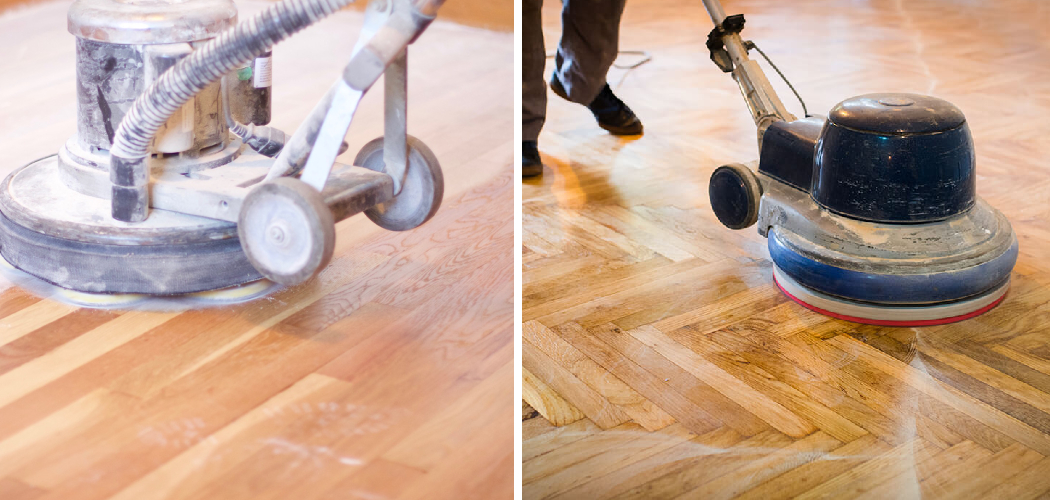Do you experience scuffs and scratches on your hardwood floors? If yes, then it may be time to purchase a floor buffer for your home. Floor buffers are powerful tools that can help keep your floors looking great year-round by quickly buffing out the scratches and re-polishing the surface to bring back its original luster. With a bit of patience and some practice, anyone can learn how to use a floor buffer on hardwood floors; here’s how:
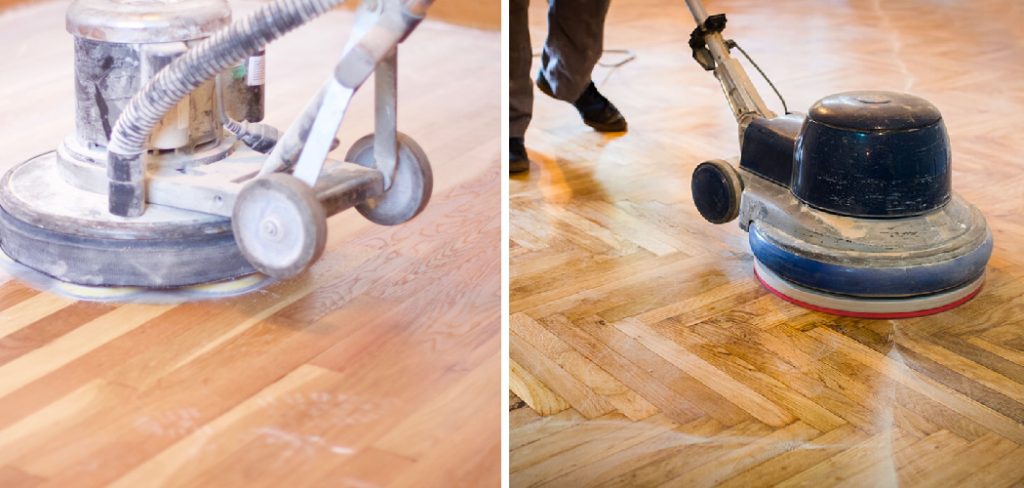
When it comes to keeping hardwood floors clean, dusting and sweeping just aren’t enough – you need a floor buffer! Floor buffers are invaluable pieces of equipment for eliminating dirt, grime, and material that builds up on your hardwood floors over time. Not only do they keep your flooring looking spotless and shining brilliantly, but they can also help preserve the health of your finishings by removing wear and tear before it has a chance to damage them.
So if you have been searching for an effective way to maintain cleanliness in the home or office while protecting your investment in hardwood flooring, look no further than using a floor buffer! In this blog post we will discuss how to use one – so let’s get started!
Benefits of Using a Floor Buffer on Hardwood Floors
1. Durability
One of the main benefits of using a floor buffer on hardwood floors is the added durability. A floor buffer helps to ensure that your hardwood floors are protected from dirt, dust, and other debris that can cause wear and tear over time.
2. Shine & Luster
A floor buffer also helps to add shine and luster to your hardwood floors. The polishing action of the buffer removes buildup and helps to restore the natural beauty of the wood.
3. Cost Effective
Using a floor buffer on hardwood floors is an economical way to extend the life of your floors and keep them looking beautiful for years to come. Instead of having to replace or refinish your floors, you can simply use a floor buffer to clean and maintain them.
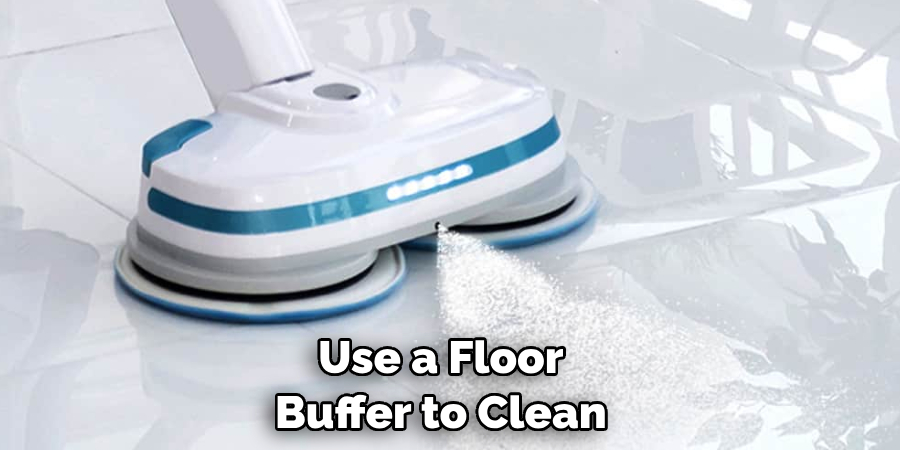
4. Safety
Another benefit of using a floor buffer on hardwood floors is the added safety that it provides. The buffing action helps to reduce slipping and tripping hazards by creating a smooth, even surface. This can be especially beneficial in areas with high foot traffic, such as entryways and hallways.
Overall, using a floor buffer on hardwood floors can be a great way to extend the life of your floors and keep them looking beautiful. With proper care and maintenance, hardwood floors can last for many years. By using a floor buffer regularly, you’ll be able to maintain its beauty while also taking advantage of all the benefits that it provides.
How to Use a Floor Buffer on Hardwood Floors in 5 Easy Steps
Step 1: Gather All The Materials
The very first step is to gather all the materials you will need for the job. You’ll need a floor buffer, along with pads designed specifically for hardwood floors. Depending on the condition of your floors or the type of finish you want, you may also need floor wax, oil-based sealer, or other finishing products.
Step 2: Prepare The Floor
Before using the floor buffer, you should make sure that your hardwood floors are clean and free of debris. Vacuum to remove dust and dirt, then use a damp mop to get rid of any remaining residue.
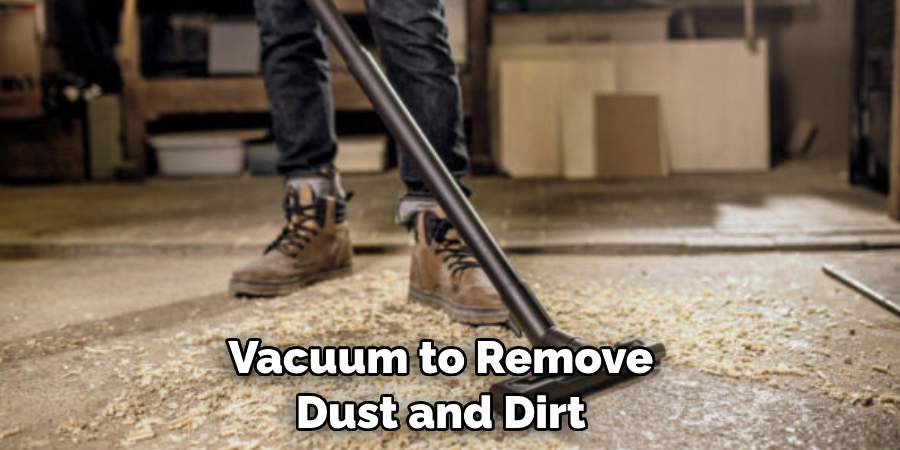
Step 3: Check Your Floor Buffer’s Settings
Before beginning, check the settings on your floor buffer carefully to make sure they’re appropriate for the type of hardwood floors you’re working on. Make sure the speed is set to low, and that the pads are installed correctly. If you need help setting up your floor buffer, consult your owner’s manual or contact the manufacturer for assistance.
Step 4: Start Buffing
Once everything is set up properly, begin buffing in an overlapping pattern. Move the floor buffer in slow, steady passes over the surface of the hardwood floors. For a deeper cleanse, you can add floor wax or oil-based sealer during this step.
Step 5: Clean Up
Once you’re finished buffing your hardwood floors, make sure to vacuum away any dust that may have been left behind. Then, remove the pads from the floor buffer and clean them thoroughly. If you used wax or sealer, make sure to apply a coat of protective coating to prevent your hardwood floors from becoming damaged by moisture or dirt particles in the future.
By following these simple steps, you can easily use a floor buffer to give your hardwood floors a deep cleanse and a beautiful finish. With a bit of patience and the right products, you’ll be able to enjoy your perfectly polished floors in no time!
Some Additional Tips to Use a Floor Buffer on Hardwood Floors
1. Do Not Use Too Much Pressure
When using a floor buffer on hardwood floors, it is important to use as little pressure as possible. Using too much pressure can damage the wood and create scratches and other imperfections. If you find yourself having to apply more than a light amount of pressure, then it may be time for an abrasive pad.
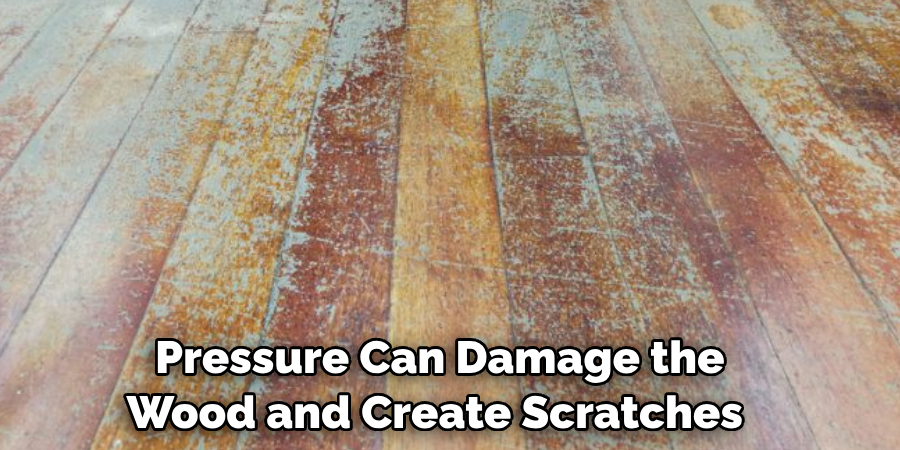
2. Avoid Over Buffing
It is also important to avoid over-buffing the hardwood floor. This can create a dull appearance and reduce the natural sheen of the wood. Instead, focus on buffing small sections at a time and then stop when you feel that the finish has been adequately polished.
3. Test in an Unseen Area
When using new products on hardwood floors, it is always important to test them in an unseen area first. This will help ensure that the product does not cause any damage and that you get the desired results.
4. Use a Vacuum or Broom before Buffing
Before buffing your hardwood floor, make sure you vacuum or sweep it to remove any debris or dirt. This will help ensure that the floor buffer can clean and polish the wood without becoming clogged.
5. Remove Excess Solution Quickly
If you are using a wax or cleaning solution with your floor buffer, make sure to remove any excess quickly before it dries. Dried on wax or cleaner residue can be difficult to remove and can damage the finish of hardwood floors.
6. Monitor the Temperature of the Buffer
Finally, it is important to monitor the temperature of your floor buffer as you work. If it gets too hot, it can cause damage to your hardwood floors and can also reduce the performance of the machine. Make sure to take regular breaks and keep an eye on the temperature gauge if possible.
Following these tips can help ensure that your hardwood floors look their best and retain their beauty for years to come. By using the proper techniques and products, a floor buffer can help keep your hardwood floors looking like new. With regular maintenance, you can enjoy the beauty of your hardwood floors for many years to come.
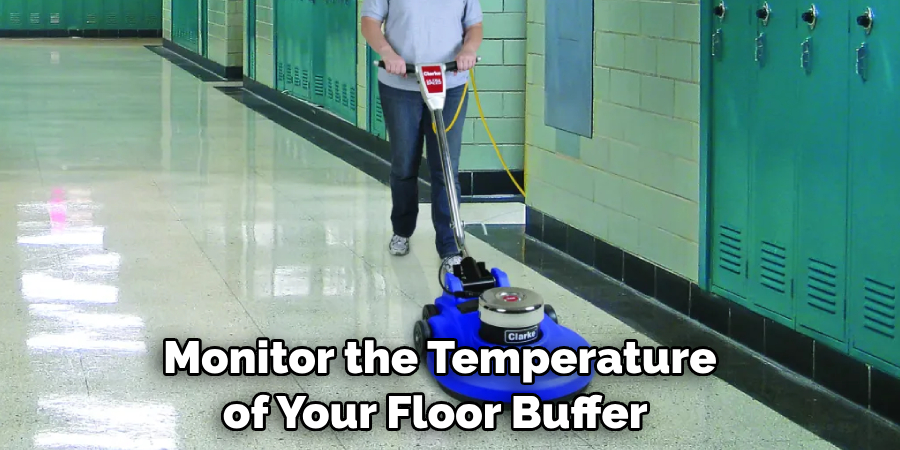
Frequently Asked Questions
What Precautions Should I Take Before Using a Floor Buffer on Hardwood Floors?
Before using a floor buffer on hardwood floors, it is important to take certain precautions. Make sure the floors are free of dust and debris by sweeping or vacuuming. If there are any cracks or splinters in the wood, make sure those are repaired before beginning with the buffing process. Additionally, use a buffer with the appropriate grit and size for your hardwood floor type to ensure the best results.
Do I Need to Apply Wax Before Buffing My Hardwood Floors?
In general, it is beneficial to apply wax before buffing hardwood floors. This helps create a protective layer on the wood that will be further enhanced by buffing. Depending on the type of hardwood floor you have, you may need to use a specific kind of wax in order for it to be most effective. It is also important to follow the manufacturer’s instructions when buffing with wax as too much can lead to an uneven finish.
What Are the Benefits of Buffing Hardwood Floors?
Buffing hardwood floors can help to restore their shine and luster. This process can also help to reduce the appearance of scratches and dings in the wood, making it look almost like new again.
Additionally, buffing helps to create a protective layer on the floor that will make it more resistant to dirt and other debris. In some cases, buffing may even be able to fill in small gaps between boards. Finally, buffing will help to increase the lifespan of hardwood floors by protecting them from wear and tear over time.
What Do I Need to Consider When Choosing a Floor Buffer for My Hardwood Floors?
When choosing a floor buffer for your hardwood floors, it’s important to select one with the appropriate size and power level for your specific floor type. Additionally, you should ensure that the buffer is designed to be used on hardwood floors and not other surfaces such as tile or concrete. Finally, make sure the buffer has all of the necessary safety features in place, including a protective guard to prevent accidental injury.
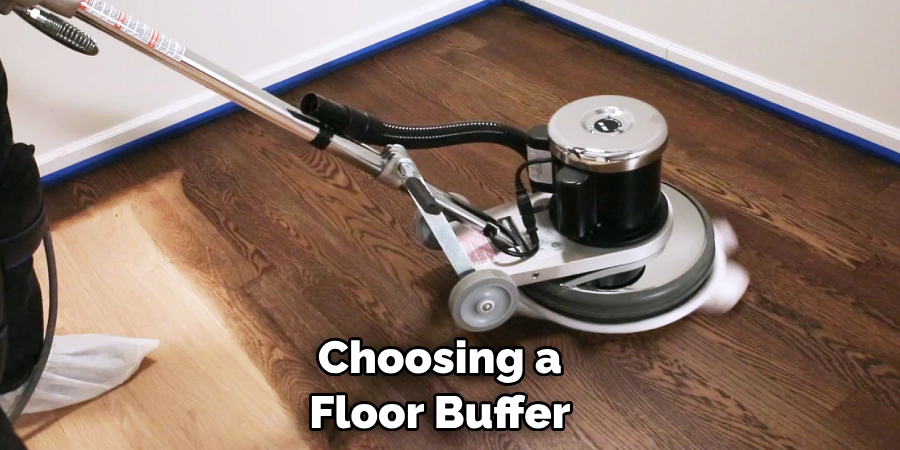
How Much Does Buffing Hardwood Floors Cost?
The cost of buffing hardwood floors can vary depending on the size of the area and the type of floor buffer used. Generally, you should expect to pay around $50-75 per hour for professional buffing services. If you choose to do the work yourself, it will likely be cheaper as long as you have all the necessary supplies.
What Are the Key Steps for Buffing Hardwood Floors?
The key steps for buffing hardwood floors involve preparing the floor, applying a coat of wax, buffing with an electric buffer machine, and completing any additional touch-ups after. It’s important to follow each step carefully in order to achieve optimal results and avoid damaging your hardwood floors. Additionally, you should make sure to read and follow the manufacturer’s instructions for any products used in the buffing process.
Can I Buff My Hardwood Floors Without Using a Machine?
Yes, it is possible to buff your hardwood floors without using a machine. This method involves using a cloth or mop that has been soaked in a solution of wax and water. Then, you can use the cloth or mop to buff the hardwood floors in a circular motion until they have achieved the desired shine. However, it is important to note that this method may take longer and may not be as effective as using an electric buffer machine.
Can I Rent a Floor Buffer?
Yes, you can rent a floor buffer from certain hardware stores or home improvement centers. This can be an economical option if you only need to use the machine for a short period of time. However, it is important to ensure that the rented buffer is appropriate for your floor type and has all the necessary safety features in place before using it.
Can I Buff My Hardwood Floors Too Much?
Yes, it is possible to buff your hardwood floors too much. Overbuffing can cause the wood to become dull and may even result in an uneven finish. To avoid this, be sure to read and follow the manufacturer’s instructions carefully when using a floor buffer. Additionally, make sure not to leave the buffer in one spot for too long as this can cause the wood to become overheated.
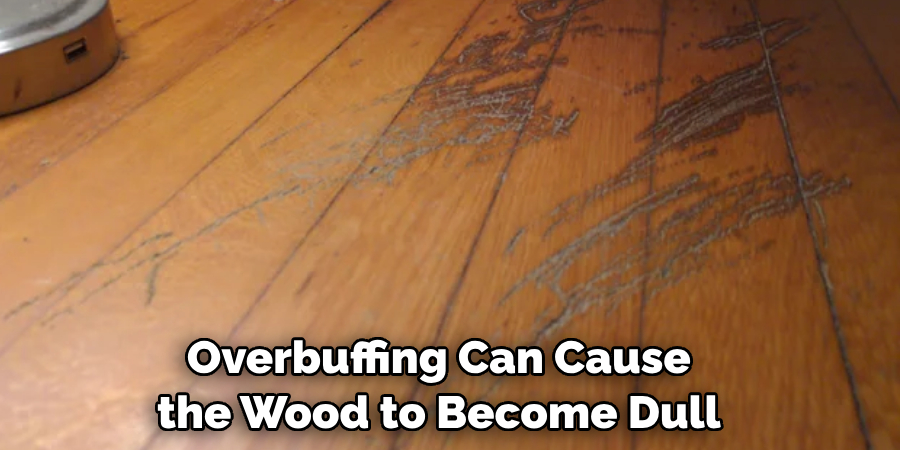
Conclusion
All in all, it is important to take good care of your hardwood floors so that they last through the years. Using a floor buffer to clean thoroughly and remove scratches is one part of maintaining them. It’s simple, and efficient, and will help you keep your floors looking their best. Cleaning with a floor buffer doesn’t have to be complicated;
Now you know how to use a floor buffer on hardwood floors! Search online for more detailed information when necessary. Taking the time for proper maintenance will ensure you have beautiful and clean floors for many years to come! Have fun buffing and polishing your hardwood today!
